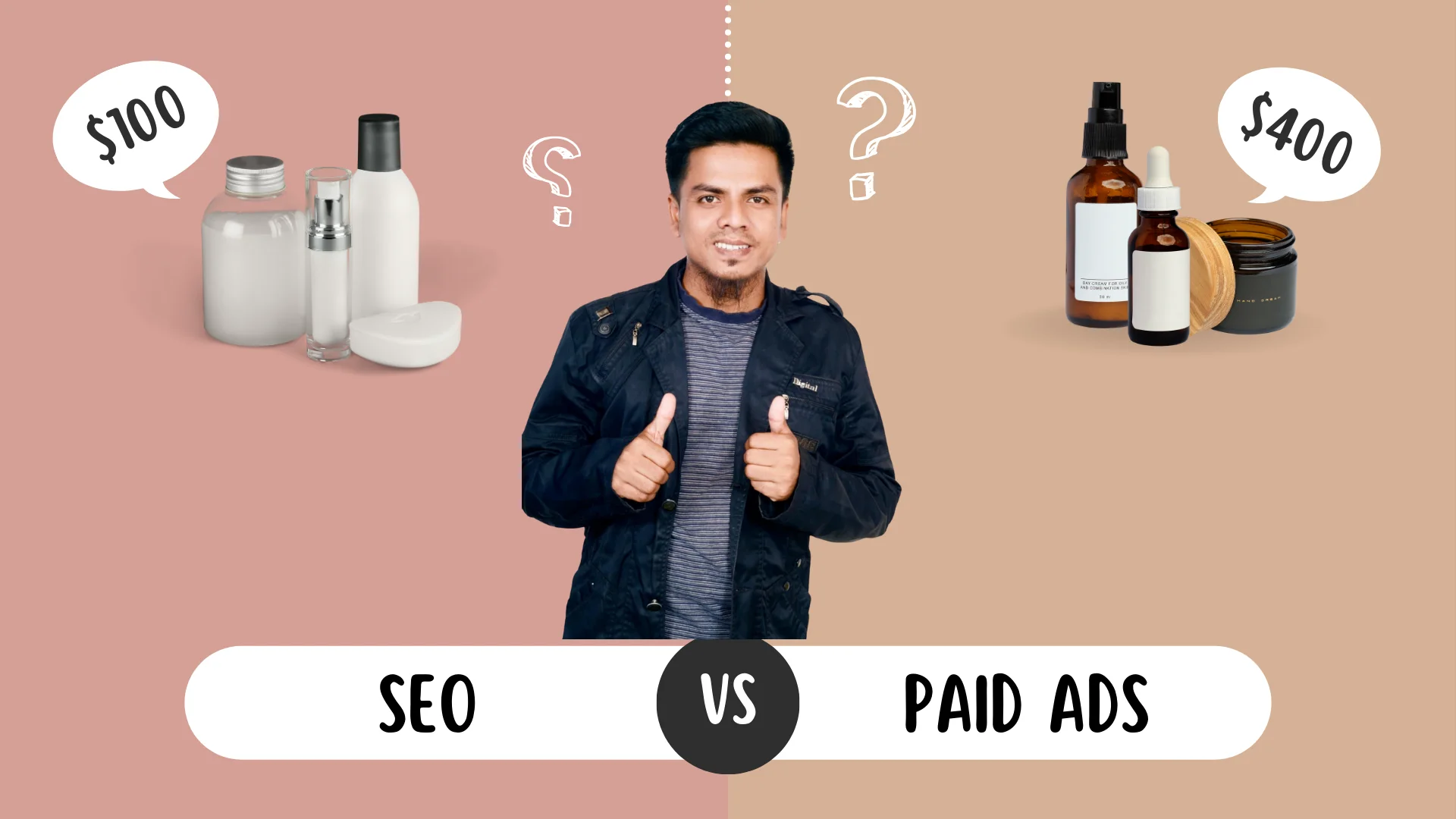SEO vs Paid Ads Running an e-commerce store and wondering how to boost sales?
Should you focus on SEO for long-term organic growth or invest in paid ads for quick, immediate results?
Two powerhouses, SEO and paid ads, often dominate discussions around digital marketing strategies.
But which one truly delivers better ROI for e-commerce brands?
Let’s dive into this ultimate showdown!

SEO vs Paid Ads Understanding SEO for E-commerce
What is SEO?
SEO (Search Engine Optimization) It’s the art of driving organic (and free!) traffic by ranking high in search results.
Why is SEO a Game-Changer for E-commerce?
- Cost-Effective: No need to pay for every click!
- Sustainable Growth: Once optimized, traffic flows consistently over time.
- Boosts Trust: High rankings = high credibility.
Winning SEO Strategies for E-commerce
- Keyword Optimization: Focus on product-related search terms.
- High-Quality Content: Publish buying guides, blogs, and FAQs.
- Technical SEO: Ensure fast loading speeds and mobile-friendly designs.
- Link Building: Collaborate with reputable sites to enhance domain authority.
Understanding Paid Ads for E-commerce
What Are Paid Ads?
Paid ads are advertisements placed on platforms like Google, Facebook, or Instagram, where you pay for visibility. These ads can appear as search results, social media posts, or even banners.
Benefits of Paid Ads for E-commerce
- Instant Traffic: Ads go live, and visitors start clicking right away.
- Laser-Targeted Reach: Specify demographics, interests, and behaviors.
- Measurable ROI: Track every penny spent and earned.
Types of Paid Ads
- PPC Ads: Appear on search engines like Google.
- Social Media Ads: Found on platforms like Instagram, Facebook, and TikTok.
- Display Ads: Visual banners spread across websites.
SEO vs Paid Ads: A Head-to-Head Comparison
1. Cost Considerations
- SEO: Requires investment in tools, content, and expertise. Upfront costs but no ongoing ad spend!
- Paid Ads: Pay-per-click or impression. Costs can escalate based on competition.
2. Traffic Generation
- SEO: Gradual but steady flow of organic traffic.
- Paid Ads: Instant traffic, but it vanishes once the budget ends.
3. Long-Term vs. Short-Term Impact
- SEO: A slow burn with lasting results.
- Paid Ads: Immediate visibility but no longevity.
4. Audience Targeting
- SEO: Attracts a broad audience actively searching for your products.
- Paid Ads: Hyper-focused targeting for niche markets.
5. Conversion Rates
- SEO: Higher trust from users often leads to better conversions.
- Paid Ads: Converts faster but may lack brand loyalty.
6. Scalability
- SEO: Expands with content, backlinks, and optimizations over time.
- Paid Ads: Scale by increasing budgets or bidding strategies.
When to Use SEO vs Paid Ads?
Choose SEO If:
- You’re looking for sustainable growth
- You want to build long-term credibility and trust
- You have time to invest in organic traffic
Choose Paid Ads If:
- You need instant results
- You’re launching a new product or promotion
- You have a flexible budget
Hybrid Approach: The Winning Formula
Why pick one when you can have both? A strategic combination of SEO and paid ads offers:
- Immediate traffic (thanks to paid ads)
- Long-term sustainability (powered by SEO)
Example: Use paid ads for quick promotions while investing in SEO for ongoing visibility.
Final Takeaway: SEO Delivers ROI, Paid Ads Deliver Speed
- Looking for fast results? Paid Ads are a solid choice—but they can be costly.
- Want sustainable, long-term growth? SEO is your smartest investment.
- The winning strategy? Combine both for maximum impact!
What’s been your experience with SEO and Paid Ads? Which worked better for your e-commerce store? Share your thoughts in the comments below!
Conclusion
SEO and paid ads each have their strengths. For long-term growth, SEO is unbeatable. For quick wins, paid ads are your go-to. The secret? Balance both to maximize ROI!